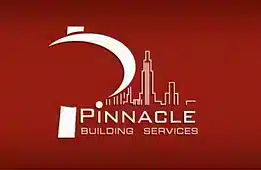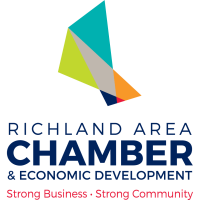Staying updated with facility maintenance trends is not just about “keeping up with the times.” It’s about continuously improving, reducing costs, maintaining compliance, and creating a better environment for everyone who uses the facilities. That being said, it can be hard to keep track of trends that seem to change from moment to moment. With this guide, we’ll give you all the current information, as well as the additional tips and tricks you need to always be in the know.
The Evolving Role of Facility Managers
Let’s start with the role of facility managers itself. The role of facility managers has undergone significant changes over the years, evolving from basic building maintenance to a multifaceted profession that encompasses numerous strategic roles. Here’s a look at how the role has transformed:
- From Maintenance to Strategic Planning: In the past, facility managers were primarily concerned with maintaining buildings and ensuring smooth operations. Today, they are involved in strategic planning, helping organizations make the best use of their resources and aligning facility management goals with overall business objectives.
- Incorporation of Technology: Technology has played a significant role in transforming facility management. From using software for scheduling maintenance tasks to implementing IoT (Internet of Things) for real-time monitoring of facilities, technology has become an essential tool for modern facility managers.
- Employee Well-being and Productivity: The facility manager’s role has expanded to include creating a conducive environment for employees. This includes ensuring health and safety standards, enhancing workplace design for better productivity, and ensuring a comfortable indoor climate.
- Vendor and Contract Management: Facility managers today often oversee contracts and manage relationships with third-party vendors, ensuring services are delivered efficiently and cost-effectively.
- Emergency Preparedness and Risk Management: Given the increasing threats of natural disasters and other emergencies, facility managers now have a significant role in emergency preparedness and risk management, ensuring the safety and continuity of operations.
In essence, the role of facility managers has evolved into a strategic one, requiring them to balance numerous responsibilities, from ensuring efficient operations and employee well-being to managing risks and sustainability initiatives. This evolution reflects the increasing importance of facility management in contributing to organizational success.
Emerging Trends in Facility Maintenance
There are several emerging trends in facility maintenance that are well worth attention, such as:
- Adoption of IoT (Internet of Things) in Facility Maintenance
- Use of AI and Machine Learning for predictive maintenance
- Implementation of Green and Sustainable Practices
- Focus on Employee Health and Well-being
- Integration of Smart Building Technologies
Below, we’ve provided a detailed analysis of each one of these trends.
Detailed Analysis of Each Trend
Let’s dive right in!
- Adoption of IoT (Internet of Things): IoT technology is revolutionizing facility maintenance by enabling real-time monitoring and control of various systems within a facility. Sensors can collect data on everything from temperature and humidity to energy usage, which can be analyzed to identify inefficiencies, predict potential issues, and automate various maintenance tasks. This can lead to significant cost savings, improved efficiency, and increased lifespan of equipment.
- Use of AI and Machine Learning: AI and machine learning are being used to analyze the vast amounts of data collected by IoT devices. These technologies can identify patterns and make predictions that humans might miss. For example, they might predict when a piece of equipment is likely to fail based on subtle changes in its performance. This allows for proactive maintenance, reducing downtime and repair costs.
- Implementation of Green and Sustainable Practices: Sustainability is a key focus in facility maintenance today. This involves implementing practices such as energy-efficient lighting, renewable energy sources, green roofing, and recycling programs. Not only do these practices reduce a facility’s environmental impact, but they can also result in significant cost savings in the long run.
- Focus on Employee Health and Well-being: Facility managers are increasingly recognizing the importance of creating healthy work environments. This includes improving indoor air quality, ensuring adequate natural light, and designing spaces that encourage movement and collaboration. Such measures can boost employee productivity, satisfaction, and retention.
- Integration of Smart Building Technologies: Smart buildings use integrated technologies to control various building systems automatically and optimally. This includes HVAC systems, lighting, security systems, and more. By optimizing these systems, smart buildings can significantly improve energy efficiency, comfort, and safety.
In summary, these trends are all about leveraging technology and sustainable practices to improve efficiency, reduce costs, enhance the working environment, and minimize environmental impact. As these trends continue to evolve, they will likely play an increasingly important role in facility management.
The Impact of These Trends on Facility Managers
These emerging trends are significantly changing the job of facility managers in various ways:
- Greater Emphasis on Technology: With the rise of IoT, AI, and smart buildings, facility managers need to become more tech-savvy. They need to understand how to use these technologies to improve efficiency, predict maintenance needs, and make data-driven decisions.
- Shift Towards Proactive Maintenance: The use of predictive analytics and machine learning is shifting facility management from reactive to proactive maintenance. Facility managers now need to focus on predicting and preventing issues before they occur, rather than simply responding to them when they do.
- Sustainability Management: As sustainability becomes a key focus, facility managers are tasked with implementing green practices. This could involve everything from managing energy use and waste disposal to sourcing sustainable materials and ensuring compliance with environmental regulations.
- Data Analysis Skills: The influx of data from various sources means that facility managers need to develop strong data analysis skills. They need to be able to interpret and use this data to inform their decision-making, plan maintenance, and improve overall facility performance.
In essence, these trends are expanding the scope of facility management and requiring facility managers to acquire new skills and knowledge. It’s an exciting time to be in the field, with lots of opportunities for those who are willing to adapt and evolve with the changes.
Advice for Facilities Managers
As you know, staying updated with the emerging trends in facility management is crucial for success. Here are some steps that facility managers can take:
- Continuous Learning: Facility managers should invest time in learning about new technologies, methods, and practices in their field. This could involve taking online courses, attending webinars, or reading industry publications.
- Networking: Joining professional organizations or online communities can provide opportunities to connect with other professionals in the field. These connections can provide valuable insights and advice about emerging trends.
- Attend Conferences and Trade Shows: These events can provide a wealth of information about the latest trends and technologies. They also offer opportunities to see these technologies in action and speak directly with vendors.
- Collaborate with Vendors and Suppliers: Vendors can often provide insights into new products, services, or technologies that could benefit your facilities. Don’t hesitate to ask them about the latest trends in the industry.
- Experiment with New Technologies: Whenever possible, try out new technologies or practices on a small scale before implementing them widely. This can provide a better understanding of their potential benefits and challenges.
- Stay Informed About Regulatory Changes: Laws and regulations related to facilities management can change frequently. Keeping abreast of these changes can help ensure your facilities remain compliant and can also highlight new trends or shifts in the industry.
- Invest in Training: As new technologies and practices emerge, facility managers will need new skills and knowledge to implement them effectively. Investing in training for yourself and your team can help ensure you’re prepared to take advantage of these trends.
By actively seeking out information and opportunities to learn, facility managers can stay ahead of the curve and ensure they’re ready to adapt to the changing landscape of facility management.
The future of facility maintenance is an exciting one, marked by rapid technological advancements and a growing emphasis on sustainability and employee well-being. As we move forward, we can expect these trends to continue shaping the industry. Facility managers who embrace these trends and adapt to the changing landscape will be well-positioned to succeed. It’s a thrilling time to be in the field, with lots of opportunities for innovation and growth – so seize the opportunity, and good luck!




